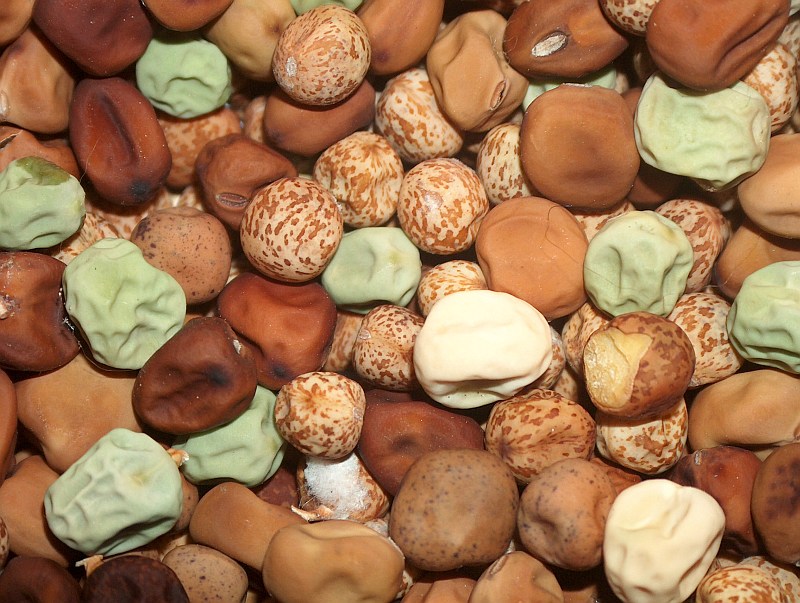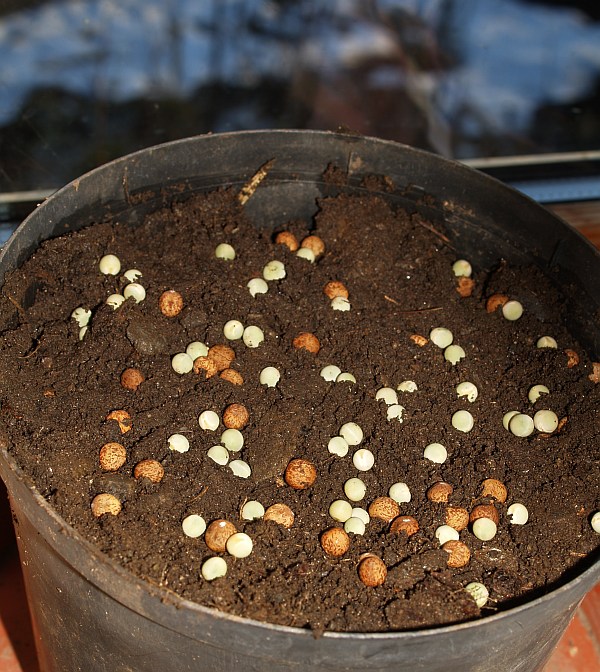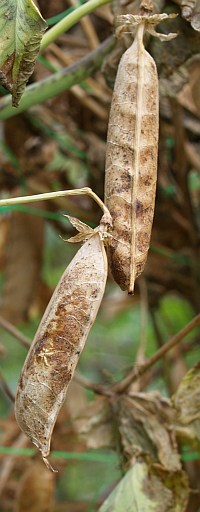Every year I grow 15-20 different garden pea (Lathyrus oleraceus / Pisum sativum) varieties and they’ve now all been dried, I’ve taken seed of those I want to continue with or share with members of KVANN (Norwegian Seed Savers) and the remainder will become delicious multivariety pea soup in winter: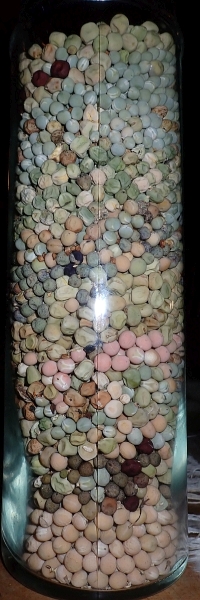 It turns out that I altogether have exactly 50 varieties in my seed vault (i.e, the cellar), some of which are only grown every 3rd year. Some are modern varieties, others Norwegian, Swedish, Danish and Finnish and UK heirlooms. Today I was sorting the packets and peas in old packets (more than 4 years old) were added to the soup mix! I recycle seed packets, so not many of these packets were originally for peas!
It turns out that I altogether have exactly 50 varieties in my seed vault (i.e, the cellar), some of which are only grown every 3rd year. Some are modern varieties, others Norwegian, Swedish, Danish and Finnish and UK heirlooms. Today I was sorting the packets and peas in old packets (more than 4 years old) were added to the soup mix! I recycle seed packets, so not many of these packets were originally for peas!
Category Archives: Pulses
Runner Bean Falafels
After many years of trying, I managed to get a decent crop of dried runner beans / løpebønner* (Phaseolus coccineus). My own garden is a bit too cold due to the shady conditions on a rather windy spot. Last year I grew a selection of 15-20 early varieties sourced from the German gene bank IPK Gatersleben and commercial suppliers which I grew successfully in the sunnier community garden (Væres Venner).
They were made into delicious falafels, accompanied by living room grown Kandahar cress (karse) and wild buckwheat / vill bokhvete and turned into gourmet food with a couple of dandelion flowers from the windowsill!
*In Norwegian, these beans are known usually as blomsterbønner (flower beans) and most often used as an ornamental. I prefer to call them løpebønner to better reflect that these are much more than an ornamental!
Northern Runner Bean Grex
Last winter I sourced 16 of the earliest varieties of runner beans / løpebønner (Phaseolus coccineus), a bean that is marginal in maturing (for seed) in my area. I decided therefore to try and create an earlier maturing landrace for my area. The varieties I grew can be found at the bottom. They were started indoors and transplanted out in the Væres Venner Community Garden in Trondheim in early June, all planted close to each other. Here they are in flower in mid-August:
Despite a very wet autumn there was quite a good yield of mature beans; a good start!

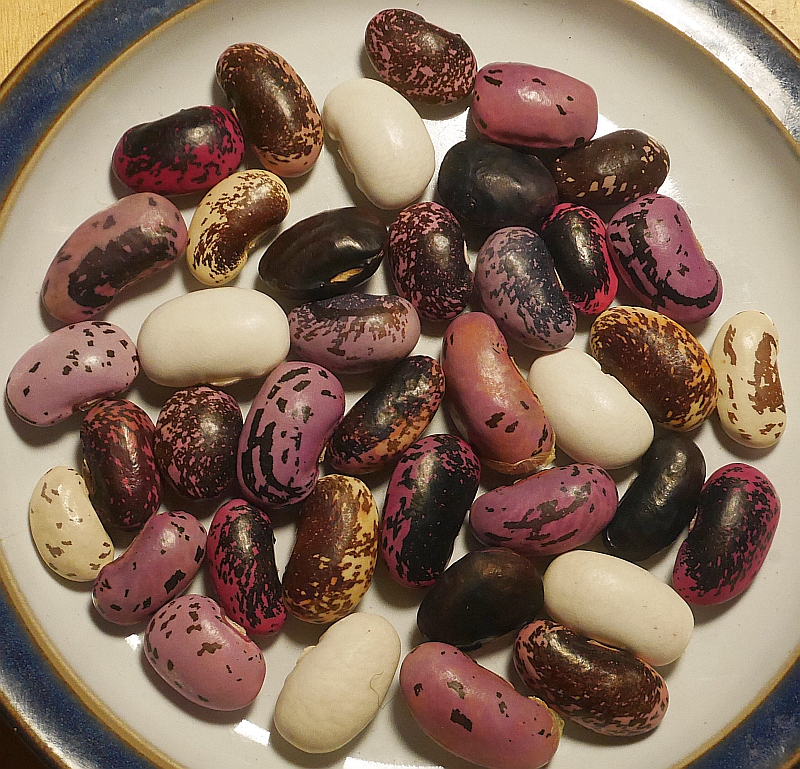
As with my broad bean grex, I will select for earliness and diversity of colour.
These varieties were used:
Polestar (Chiltern Seeds)
Celebration (Chiltern Seeds)
Jackpot (Chiltern Seeds)
Sunset
Ruusupapu (Finland)
Hammond’s Dwarf Scarlet
Preisewinner (PHAS 8592/ German) IPK Gatersleben
Bicolor (PHAS 212/ Slovakia) IPK Gatersleben
(PHAS 8106/ German) IPK Gatersleben
(PHAS 8158/ Slovakia) IPK Gatersleben
Albiflorus (PHAS 8121) IPK Gatersleben
Stengebohnen (PHAS 8143/ Netherlands) IPK Gatersleben
Albiflorus (PHAS 8117/ German) IPK Gatersleben
(PHAS 8124/ Austrian) IPK Gatersleben
Broad Bean Land Race
First and second harvest of broad beans for drying to eat and next year’s seed. This is my “Væres Venner Mix” land race selected for maximum bean diversity each year – a joy to work with and candy for the eyes! The first sowing (first picture) were sown on 18th May and harvested on 19th September; the second sowing was on 2nd June and were harvested on 24th September (both were 5 different colour selections from last year’s crop; sown in 5 adjacent rows!)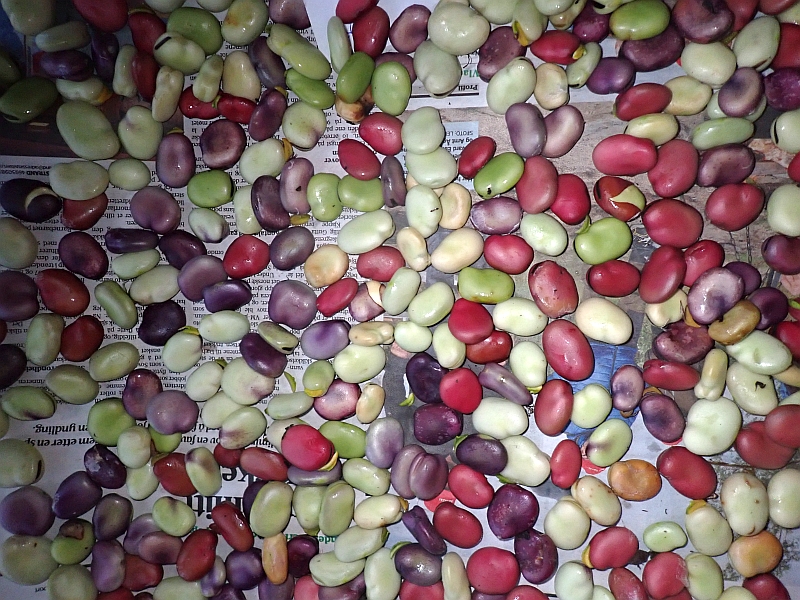

Red Cheeks and Fingerprints
I harvested two of the more beautiful broad (fava) beans I’ve grown yesterday, both of which originate in Canada. Red Cheek and Fingerprint favas. The diversity of forms, colours and sizes in these beans doesn’t cease to amaze me! I will definitely be trying to maintain these forms within my grex of broad beans (selection for a wide diversity of different forms every year and all planted close together so that they will cross promiscuously)!
Read legendary Will Bonsall’s article on fava beans where he talks about the diversity of forms and his collection of 250 varieties he maintains for Seed Savers Exchange: https://www.mofga.org/resources/beans/favas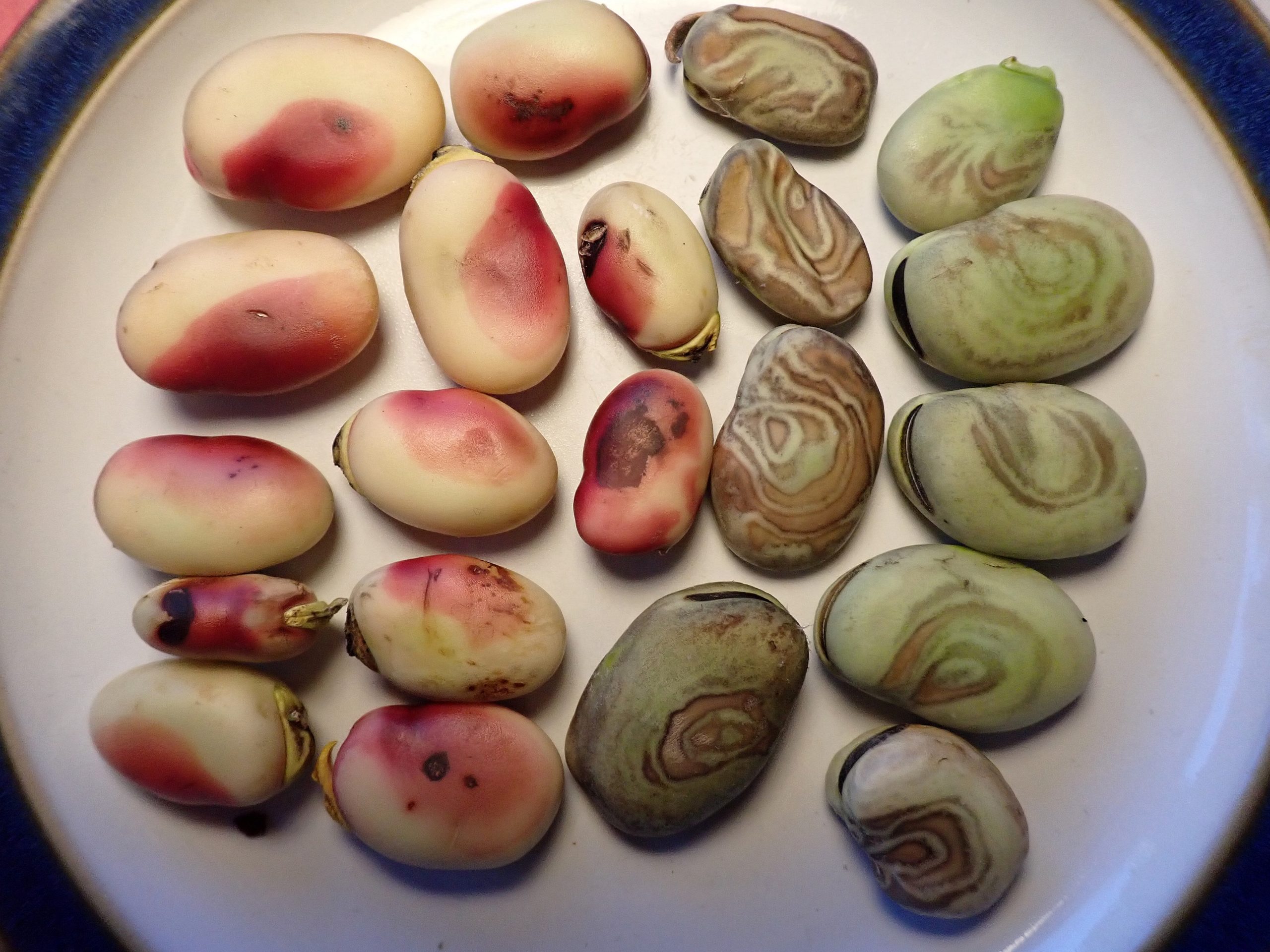

Did the Carlin Pea originate in Norway?
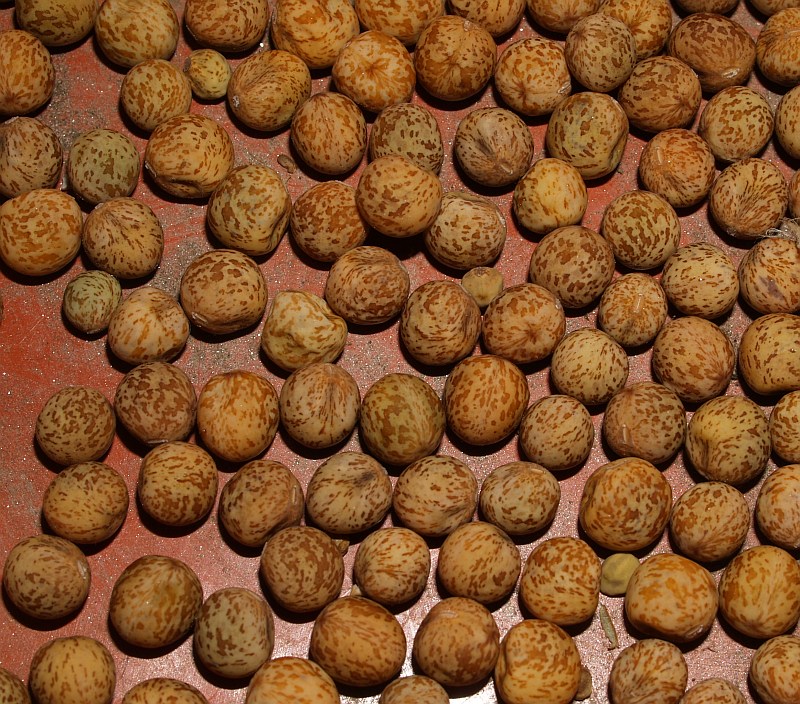 At the weekend, I packed some seed of Carlin Pea, a very old English pea that I’ve grown here in Malvik since around 1990 when I ordered it from the Heritage Seed Library in the UK. I was googling it and to my great surprise, I discovered that it is both now commercially available in the UK and that there is actually a story about it arriving on a boat from Norway:
At the weekend, I packed some seed of Carlin Pea, a very old English pea that I’ve grown here in Malvik since around 1990 when I ordered it from the Heritage Seed Library in the UK. I was googling it and to my great surprise, I discovered that it is both now commercially available in the UK and that there is actually a story about it arriving on a boat from Norway:
«…one tradition has it that when Newcastle was besieged by the Scots (in 1327), the citizens might have starved but for the arrival of a cargo of dried peas from Norway on the Sunday before Palm Sunday, known as Carlin Sunday.”
…and concerning the origin of the name Carlin:
«North East, Lincolnshire, Nottingham
Carling Peas, Black peas (Maple Peas or Pigeon Peas), boiled and then lightly fried in butter or beef fat, well-seasoned. Eaten, or given away, a tradition during Lent, particularily on ‘Carlin (or Carling or Care*) Sunday’, usually noted as the 5th Sunday in Lent known in the Church as ‘Passion Sunday’, but occasionally with the 6th Sunday in Lent, due to regional variations in the Church Calendar. Known by this name at least since Turner’s Herbal of 1562, the word may derive from ‘care’.”
* “Care” is an alternative name for “Passion”.
(Source: http://www.foodsofengland.co.uk/carlinpeasorbrownbadgers.htm and https://www.slowfood.org.uk/ff-producers/nick-saltmarsh-hodmedods-carlin-peas )
There are, however, alternative interpretations of the word Carlin, see http://adambalic.typepad.com/the_art_and_mystery_of_fo/2007/02/left_maple_peas.html
I sent the peas this week after a request from Agneta Magnusson in Sesam (Swedish Seed Savers). Sweden, unlike Norway has a rich diversity of surviving old peas, so I asked if they knew of any old varieties that resembled the Carlin Pea. They answered that, no, they hadn’t seen such a round “marbled” grey pea before!
There’s some justification then in considering the Carlin Pea to also be a Norwegian heirloom!
The flowers are also very attractive:
http://www.charlesdowding.co.uk/wp-content/uploads/2016/06/jun162-Carlin-pea.jpg
